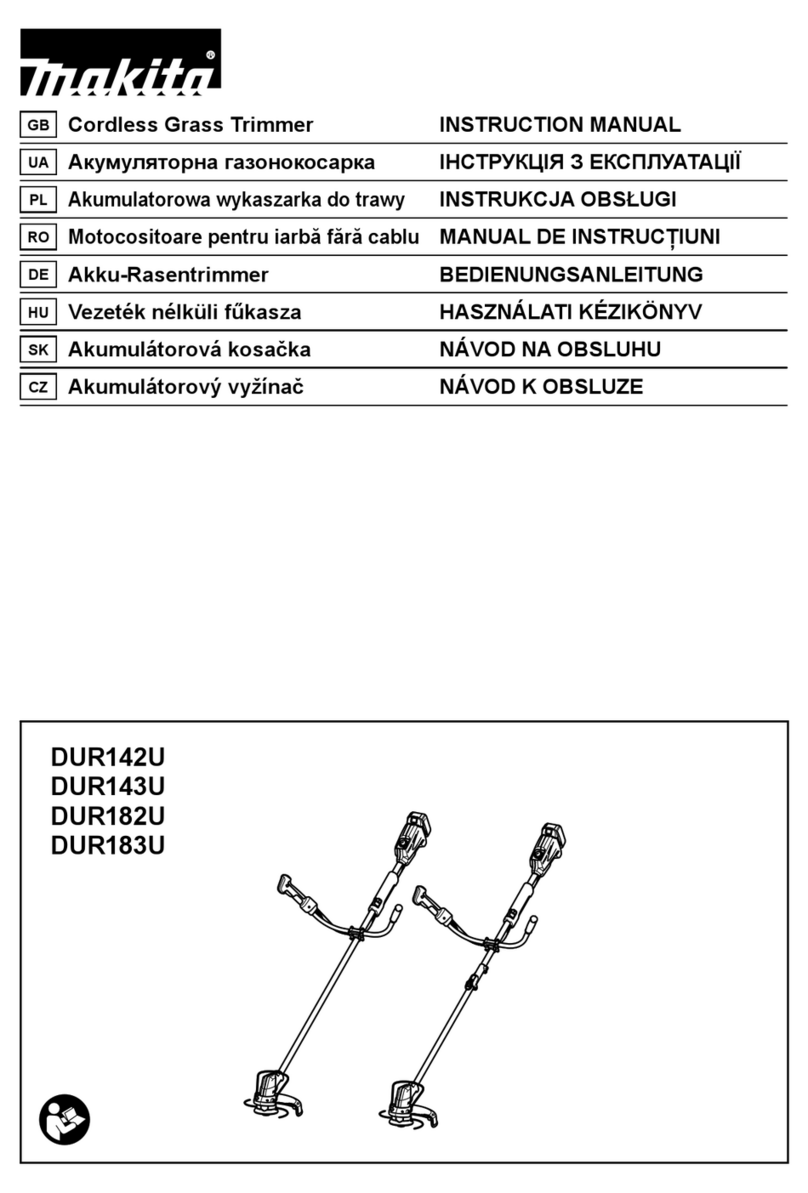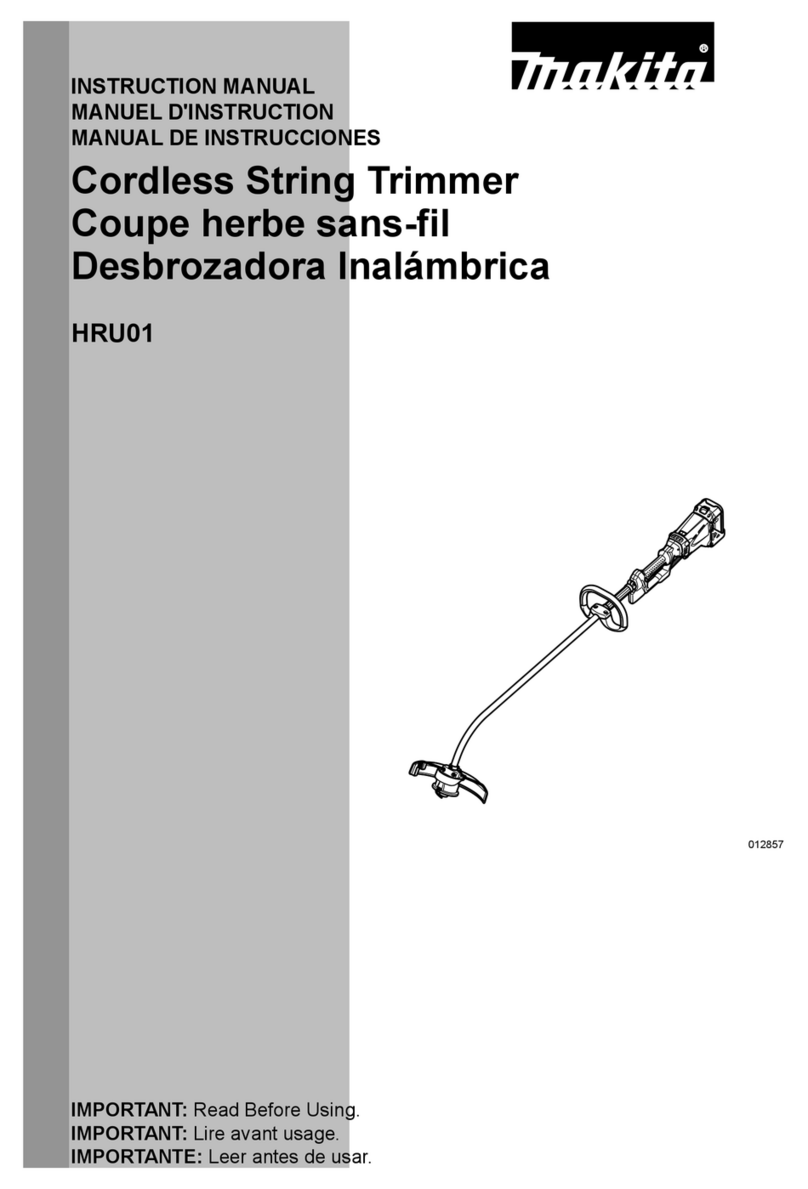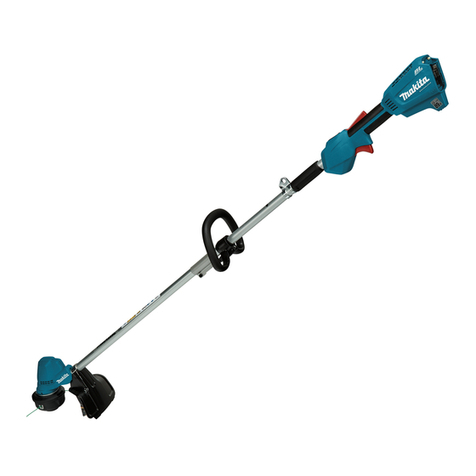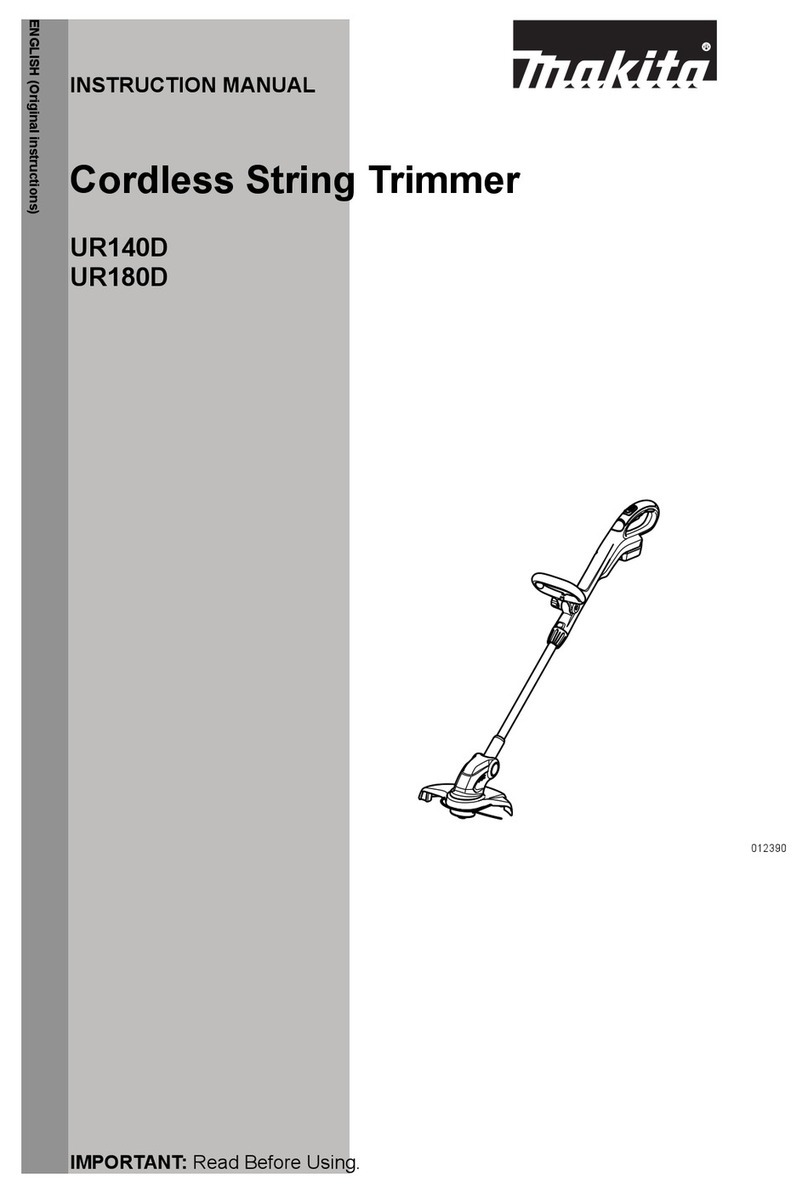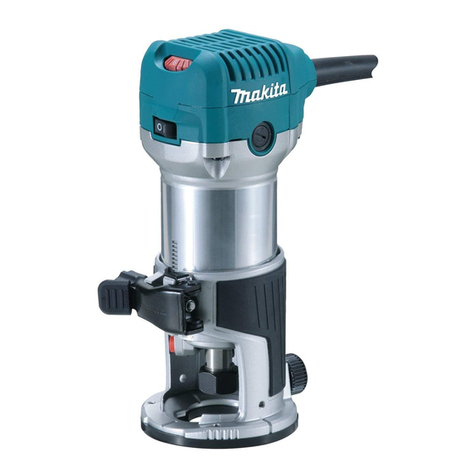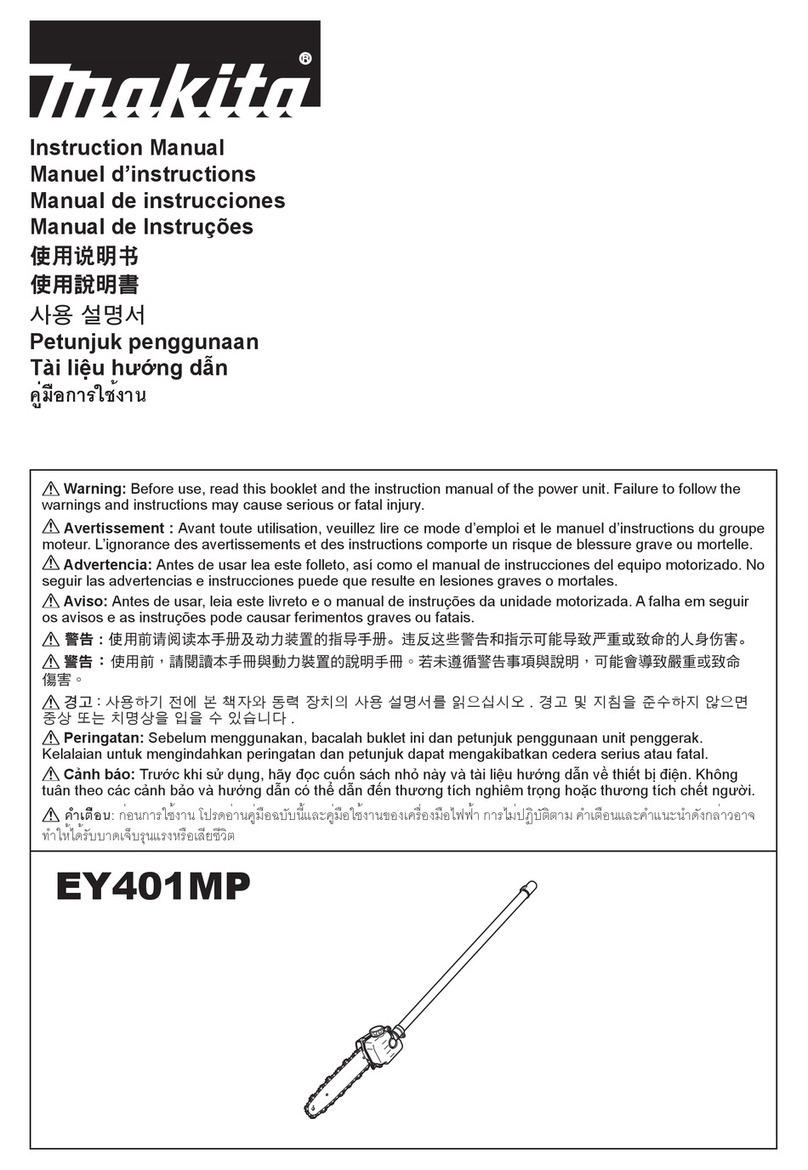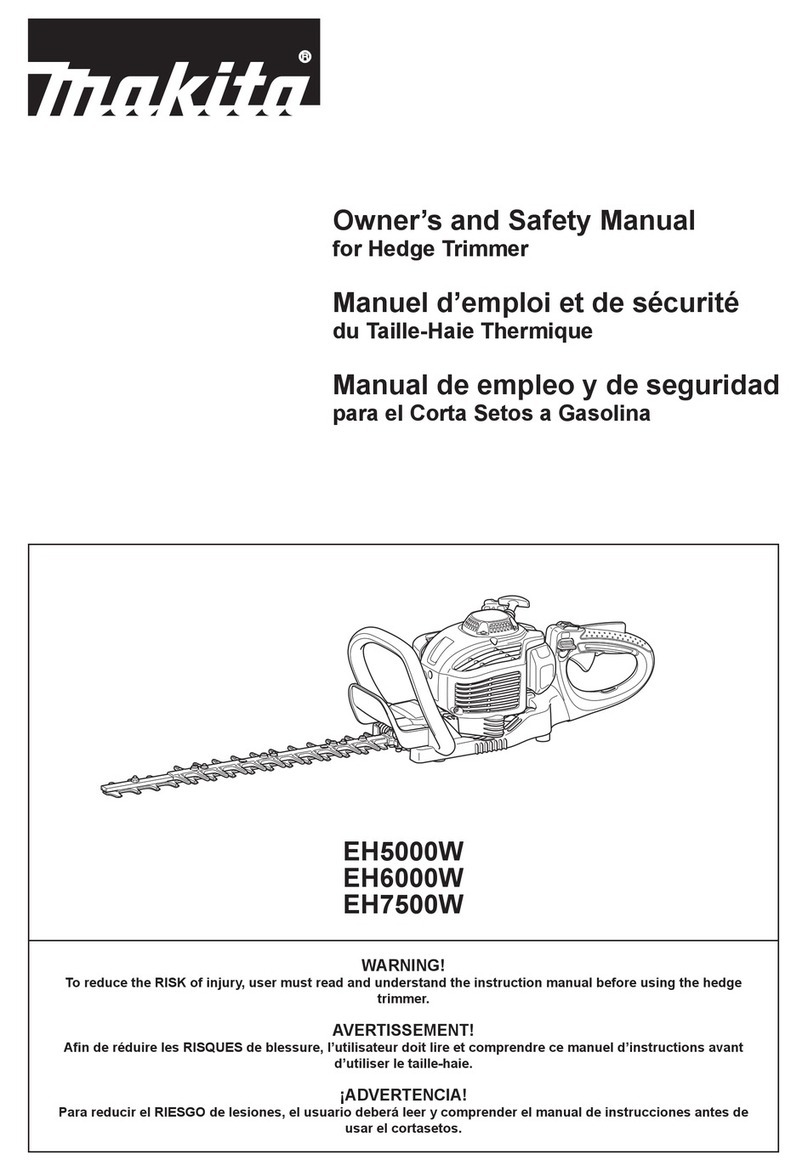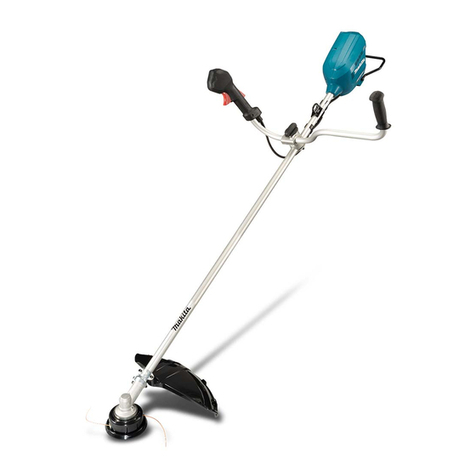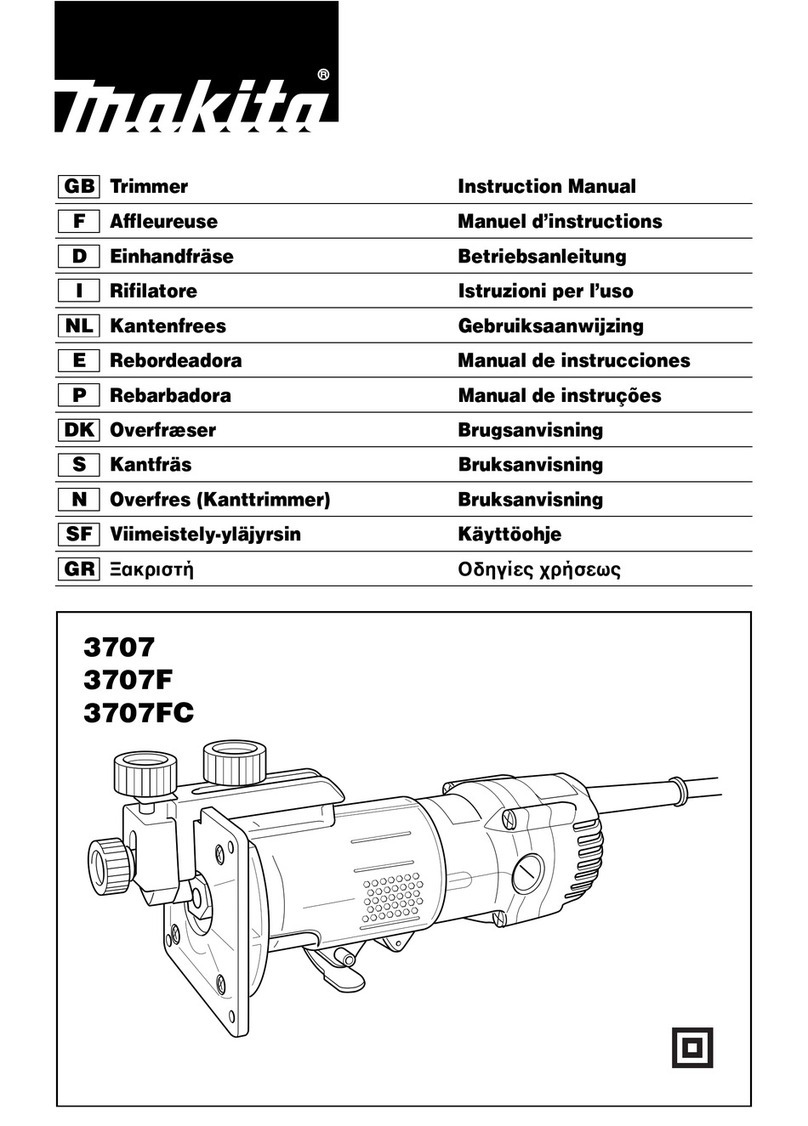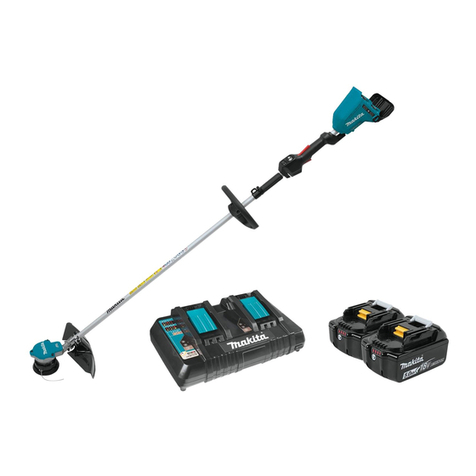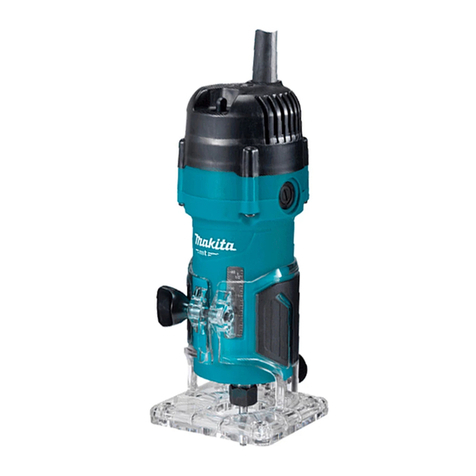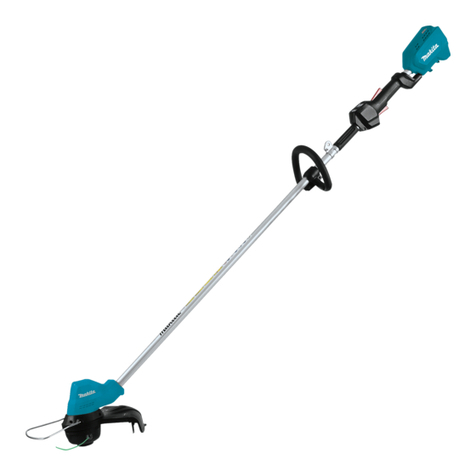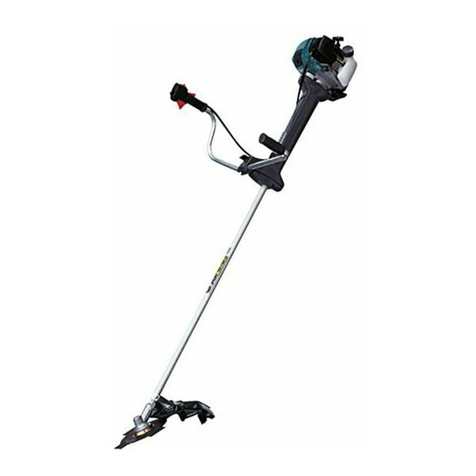9ENGLISH
Electrical and battery safety
1. Do not expose the tool to rain or wet conditions.
Water entering the tool will increase the risk of
electric shock.
2. Do not use the tool if the switch does not turn it on
and off. Any tool that cannot be controlled with the
switch is dangerous and must be repaired.
3. Prevent unintentional starting. Ensure the switch
is in the off-position before installing a battery
pack, picking up or carrying the tool. Carrying the
tool with your nger on the switch or energising
the tool that have the switch on invites accidents.
4. Recharge only with the charger specied by the
manufacturer. A charger that is suitable for one
type of battery pack may create a risk of re when
used with another battery pack.
5. Use the tool only with specically designated
battery packs. Use of any other battery packs may
create a risk of injury and re.
6. When battery pack is not in use, keep it away from
other metal objects, like paper clips, coins, keys,
nails, screws or other small metal objects, that can
make a connection from one terminal to another.
Shorting the battery terminals together may cause
burns or a re.
7. Under abusive conditions, liquid may be ejected
from the battery; avoid contact. If contact acci-
dentally occurs, ush with water. If liquid contacts
eyes, seek medical help. Liquid ejected from the
battery may cause irritation or burns.
Putting into operation
1. Before assembling or adjusting the tool, remove
the battery cartridge.
2.
Before handling the cutter blade, wear protective gloves.
3. Before installing the battery cartridge, inspect the
tool for damages, loose screws/nuts or improper
assembly. Sharpen blunt cutter blade. If the cutter
blade is bent or damaged, replace it. Check all
control levers and switches for easy action. Clean
and dry the handles.
4. Never attempt to switch on the tool if it is damaged
or not fully assembled. Otherwise serious injury
may result.
5. Adjust the shoulder harness and hand grip to suit
the operator's body size.
6. When inserting a battery cartridge, keep the
cutting attachment clear of your body and other
object, including the ground. It may rotate when
starting and may cause injury or damage to the
tool and/or property.
7. Remove any adjusting key, wrench or blade
cover before turning the tool on. An accessory left
attached to a rotating part of the tool may result in
personal injury.
OPERATION
1. In the event of an emergency, switch off the tool
immediately.
2. If you feel any unusual condition (e.g. noise,
vibration) during operation, switch off the tool and
remove the battery cartridge. Do not use the tool
until the cause is recognized and solved.
3. The cutting attachment continues to rotate for a
short period after turning the tool off. Don't rush to
contact the cutting attachment.
4. During operation, use the shoulder harness. Keep
the tool on your right side rmly.
5. Do not overreach. Keep proper footing and bal-
ance at all times. Watch for hidden obstacles
such as tree stumps, roots and ditches to avoid
stumbling.
6. Always be sure of your footing on slopes.
7. Walk, never run.
8. Never work on a ladder or tree to avoid loss of
control.
9. If the tool gets heavy impact or fall, check the
condition before continuing work. Check the con-
trols and safety devices for malfunction. If there is
any damage or doubt, ask our authorized service
center for the inspection and repair.
10. Do not touch the gear case. The gear case
becomes hot during operation.
11. Take a rest to prevent loss of control caused by
fatigue. We recommend taking a 10 to 20-minute
rest every hour.
12. When you leave the tool, even if it is a short time,
always remove the battery cartridge. The unat-
tended tool with the battery cartridge installed
may be used by unauthorized person and cause
serious accident.
13. If grass or branches get caught between the cut-
ting attachment and guard, always turn the tool off
and remove the battery cartridge before cleaning.
Otherwise the cutting attachment may rotate
unintentionally and cause serious injury.
14. Never touch moving hazardous parts before the
machine is disconnected from the mains and the
moving hazardous parts have come to a complete
stop.
15. If the cutting attachment hits stones or other
hard objects, immediately turn the tool off. Then
remove the battery cartridge and inspect the cut-
ting attachment.
16. Check the cutting attachment frequently during
operation for cracks or damages. Before the
inspection, remove the battery cartridge and wait
until the cutting attachment stops completely.
Replace damaged cutting attachment immedi-
ately, even if it has only supercial cracks.
17. Never cut above waist height.
18. Before starting the cutting operation, wait until the
cutting attachment reaches a constant speed after
turning the tool on.
19. When using metal blades, swing the tool evenly in
half-circle from right to left, like using a scythe.
20. Hold the tool by insulated gripping surfaces only,
because the cutter blade may contact hidden
wiring. Cutter blades contacting a "live" wire may
make exposed metal parts of the tool "live" and
could give the operator an electric shock.
Cutting attachments
1. Use an applicable cutting attachment for the job in
hand.
— Nylon cutting heads (string trimmer heads)
are suitable for trimming lawn grass.

